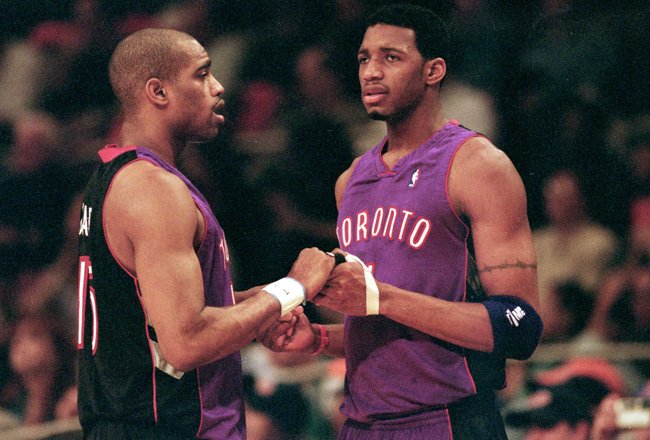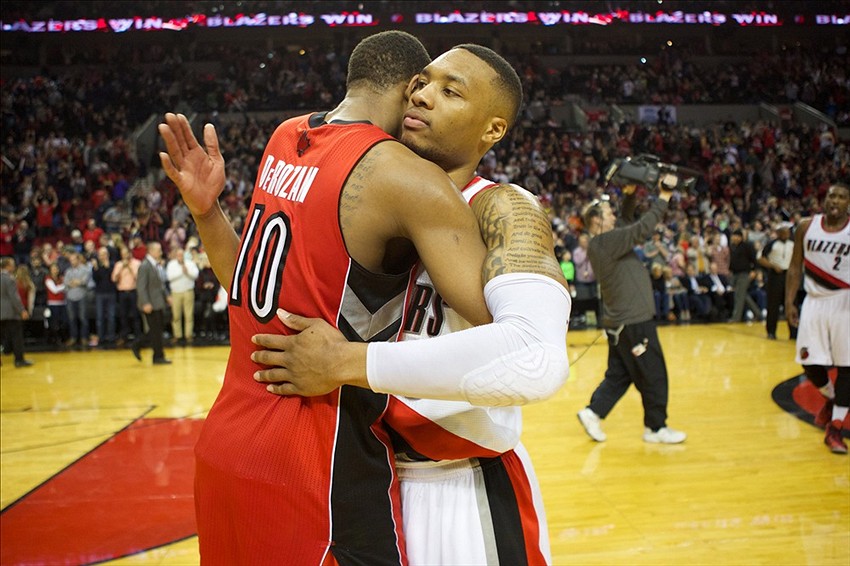Jack and Leo say yes, the evidence says no.
The Toronto Raptors broadcasting crew receives a lot of flack, especially from the readers of this site.
Personally, I think they’re alright — Leo Rautins and Rod Black are literally the worst, but their drivel is effectively counter-balanced by Jack’s folksy wisdom and Devlin’s spot-on Brick Tamland impression. They’re not the best in the business, but the business isn’t exactly brimming with talent, nor innovation.
On the whole, they’re par for the course, and from time to time, Jack provides some insightful commentary. Although his stance on analytics is borderline “get off my lawn”-esque, I respect his coaching acumen and I appreciate seeing the game through his eyes.
That is, except when it runs contrary to evidence.
One of the narratives propagated by Jack (and sometimes Leo) is that the Raptors have a supposed “optimal pace”. Jack tends to gripe about this whenever the Raptors miss a few shots while pushing the tempo. His argument is that the Raptors are coached to be a defense-first, half-court oriented team. Therefore, it’s a bad thing when the Raptors step outside of their game. Surely, you’ve caught this quip.
His point about the Raptors being “defense-first” is definitely correct, and substantiated by the evidence. Dwane Casey’s track record of being a defensively-oriented coach is well-established. As you may recall, he was famously hired by Bryan Colangelo after his vaunted 2-3 zone defense propelled the Mavericks over the Heat in the 2011 NBA Finals. There’s also the whole “pound the rock” mantra, and the fact that the Raptors rank sixth in the NBA in defensive efficiency (fourth best after the Gay trade).
However, “optimal pace” argument doesn’t hold much water, at least not when it comes to the results.
And before I go on, I will readily concede that there are issues when it comes to the operationalization of pace. The current measures of pace (ie: pace factor) is rooted in the number of possessions in a given game. In theory, since the total time in a game is fixed, a higher number of possessions equates to teams playing “faster”.
Since this classification is based on outcomes, it sometimes confuses process with results. For example, if Lowry pushes the ball down the court, but the defense recovers in time, forcing him to reset, is that up-tempo, or not? There’s also the issue of discerning between team philosophy and personnel. On one hand, there’s the “7-seconds or less” Suns teams that treated every game as a track meet. On the other, Kevin Love hucks an 70-foot outlet pass to a leaking Corey Brewer. Both plays are technically “up-tempo”, but one is a matter of principle, and the other is a product of unique talent. The result is the same, but the process is different.
Despite its flaws, “pace factor” is a fairly accurate estimate of pace, and quite frankly, it’s all that we have to go on. By this criterion, the Raptors currently play at the 9th slowest pace in the NBA at a pace factor of 91.9. In comparison, the plodding Grizzlies are last at 89.8, and the frenzied 76ers are first with a score of 100.2. These results passes the eye-test — as Jack points out, the Raptors are a slow, half-court team.
However, Jack’s assertion of the Raptors having an “optimal pace” seems a little baseless. For starters, here’s a plot of the differentials of each game (Toronto’s points – Opponent’s points) versus the pace factor of each game. Can you spot a trend (hint: there isn’t one).
More specifically, Jack asserts that when the Raptors play worse when they speed up. However, the Raptors are equally as successful playing “up-tempo” versus playing below their usual rate (15-12 vs 18-14). Granted, the list isn’t exactly chalked full of championship contending teams — the likes of Detroit, Philly and Milwaukee are on there — but there are some decent teams included in the sample. Regardless, the evidence does not concur with Jack’s theory.
All this number crunching simply disproves Jack’s answer, but fails to address his original question: “is there an optimal pace for the Toronto Raptors?”
For that, the answer is unclear, and perhaps unattainable with statistics alone. Running multivariate regression with the dataset in hopes of a statistically sound conclusion is a little moot considering the limited sample size involved (only 59 games played). In lieu of more data, I turn to Jack’s methodology — what passes the eye test?
Personally, I think the Raptors do have an optimal pace; playing slow half-court basketball.
Playing at a torrid up-tempo pace simply isn’t possible — nor advisable — with this current roster, because there isn’t enough ball-handling ability. Lowry, Derozan and Vasquez shoulder the bulk of the ball-handling duties, and they all have their flaws in terms of pushing the ball. Lowry is an excellent ball-handler, but he’s too short to consistently finish in the lane (a la Westbrook). Derozan’s ball-handling is much improved, but he’s still not entirely polished in the open court, and he’s much better at finishing lobs or leak-out passes. Finally, they don’t call him Greivis Molassquez without a reason. In short, he’s pretty slow. The Raptors lack the horses to run.
However, could the Raptors benefit from playing a little more up-tempo by being opportunistic? Of course. For example, Ross could leak out a little earlier after missed shots, and potentially make himself a target for outlet passes. Similarly, Jonas could make timelier decisions after corralling the rebound, as opposed to methodically swinging his elbows around when no one is threatening the ball.
Of course, these decisions come at a cost. Leaking out earlier means having one less player available to snag the defensive rebound which has been an issue for the Raptors of late. Similarly, having Jonas make quicker decisions risks silly turnovers under the basket, and/or commentors setting this blog ablaze. It’s not exactly a bulletproof plan.
However, as the data bears out, playing faster doesn’t seem to impact the Raptors’ success, possibly because there are circumstances where playing fast is ideal. For example, the Sixers shoot a lot of long jumpers, and their transition defense is beyond awful. It only makes sense to capitalize by running. Similarly, it’s almost impossible to score on he Pacers in the half-court, so as long as the Raptors can ensnare the rebound, they should take their chances with a quick pass up the court.
Truthfully, with a team full of youngsters, it’s probably best that the Raptors take their time. At this point in his career, Jonas struggles with making the right decisions on a consistent basis, so it’s probably best to keep his options limited. The same also applies for Ross and Derozan, who both need to improve their ball-handling to serve as effective transition wing players.
And that circles back to the motto of this season — it’s all contingent on development. Can the players on this roster develop the capability to play faster when called upon? Can Derozan push the pace and break down a mis-matched defender sagging in the paint? Can Ross master the subtle balance between leaking out, versus staying back? Can Jonas rebound more effectively, and throw outlet passes? A true contending team dictates the tempo of play, but they’re also flexible and versatile. For example, the Heat are the 22nd slowest team in the NBA, but they can run just about anybody out of the gym when they play small-ball.
But for now, the Raptors are who Jack thought they were — a slow half-court team that grinds out victories.






